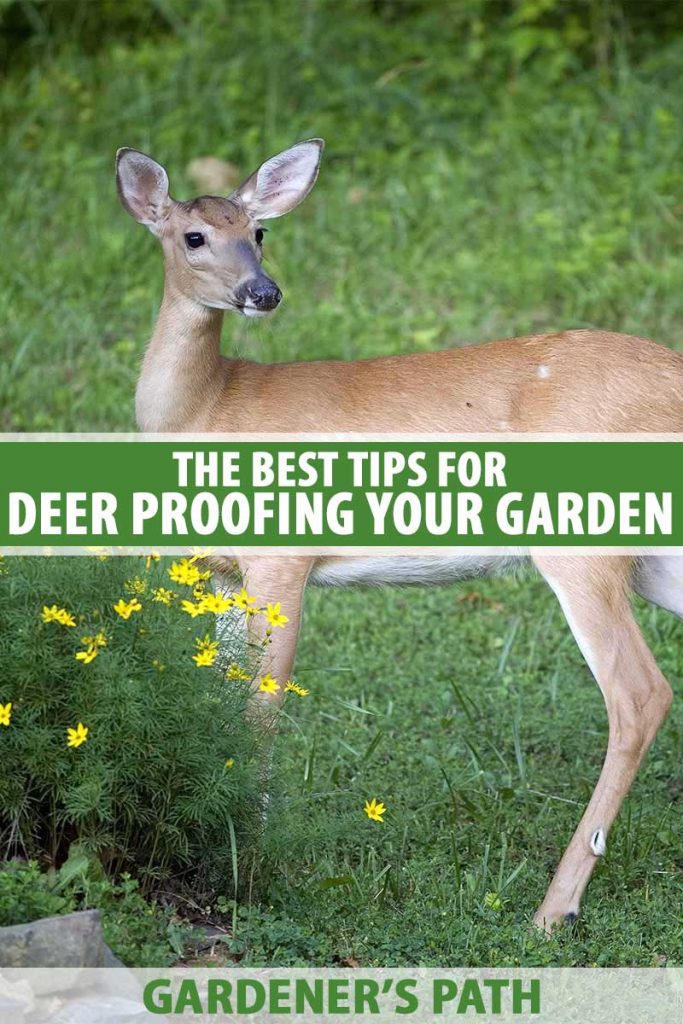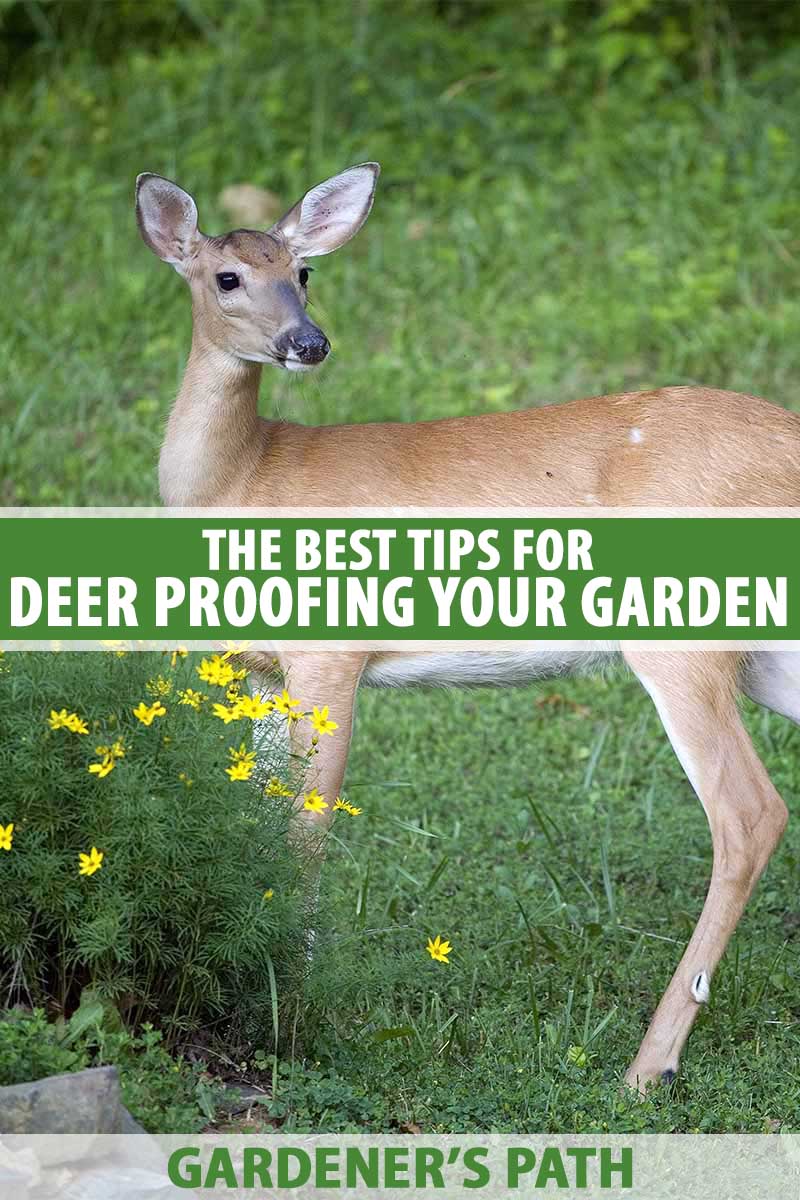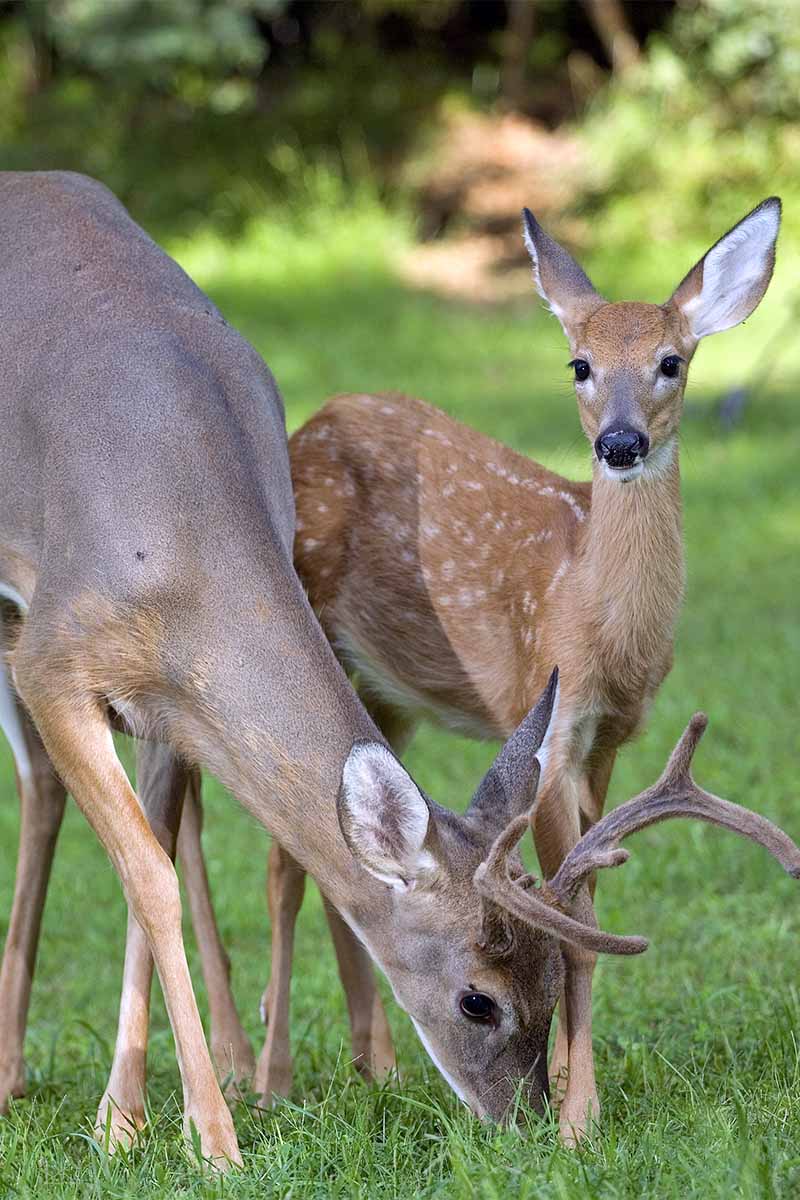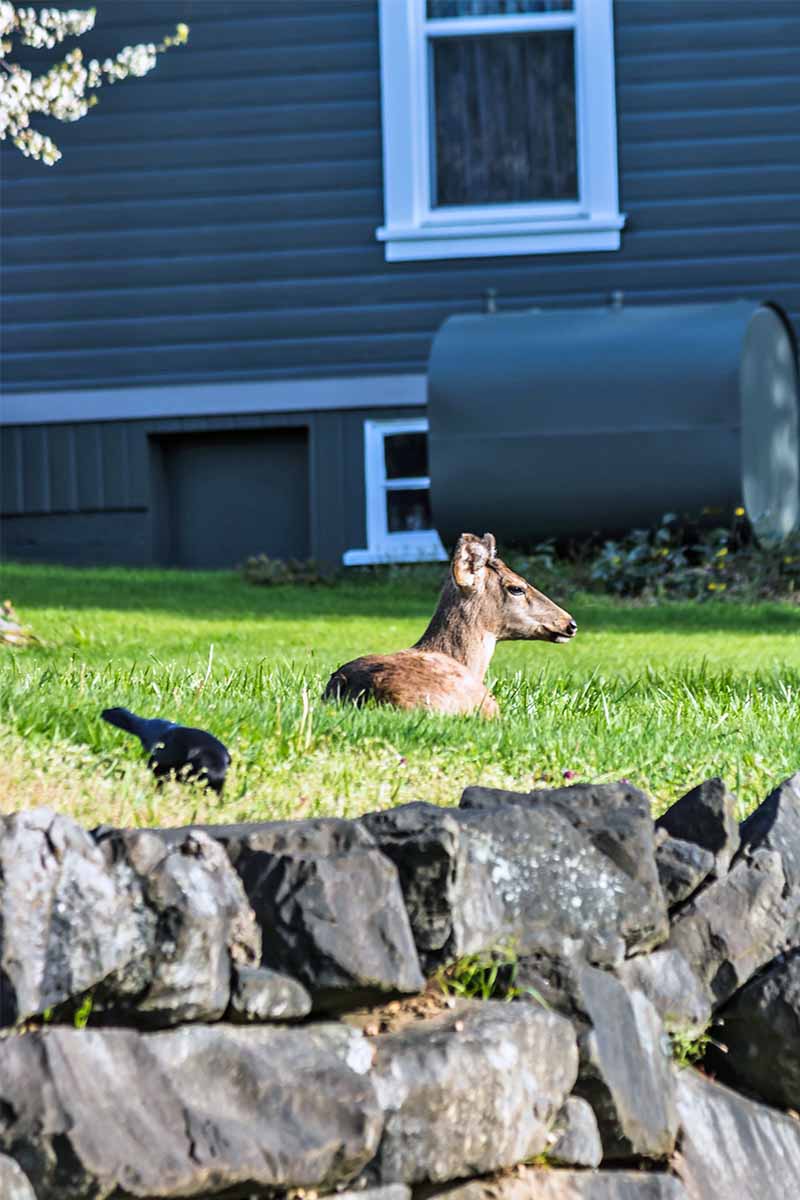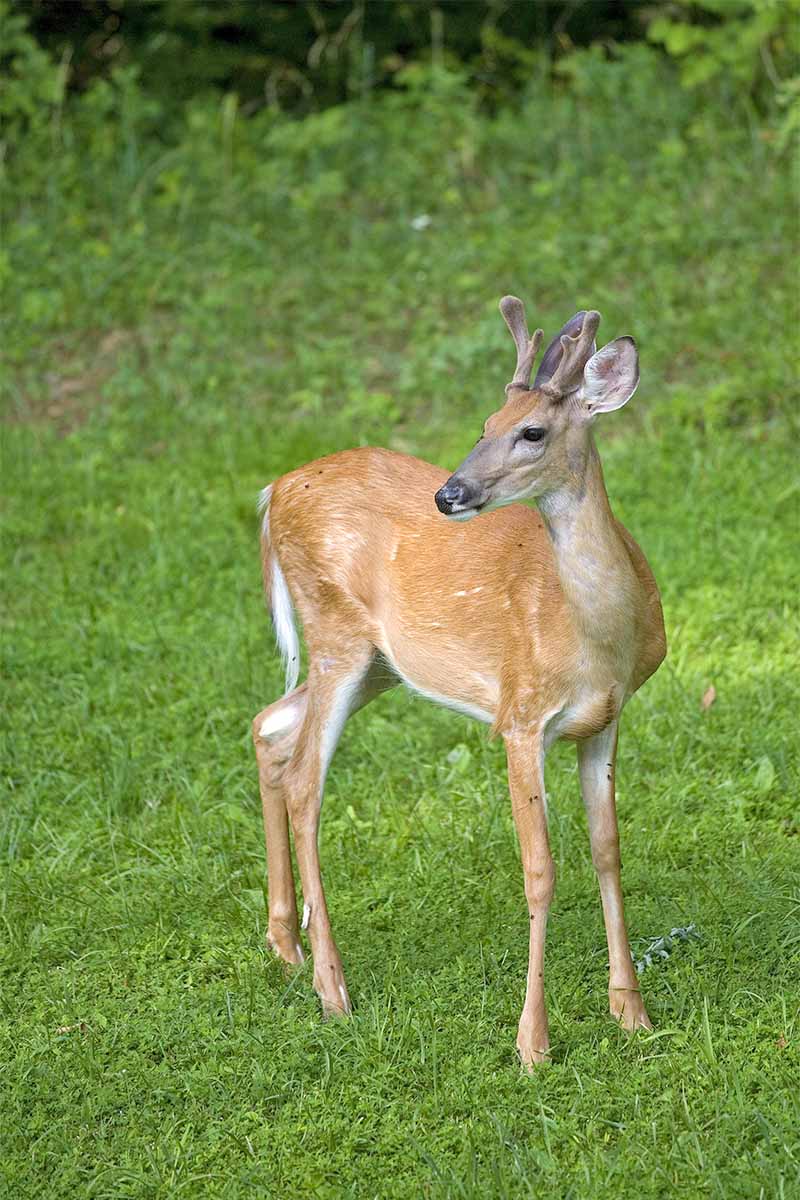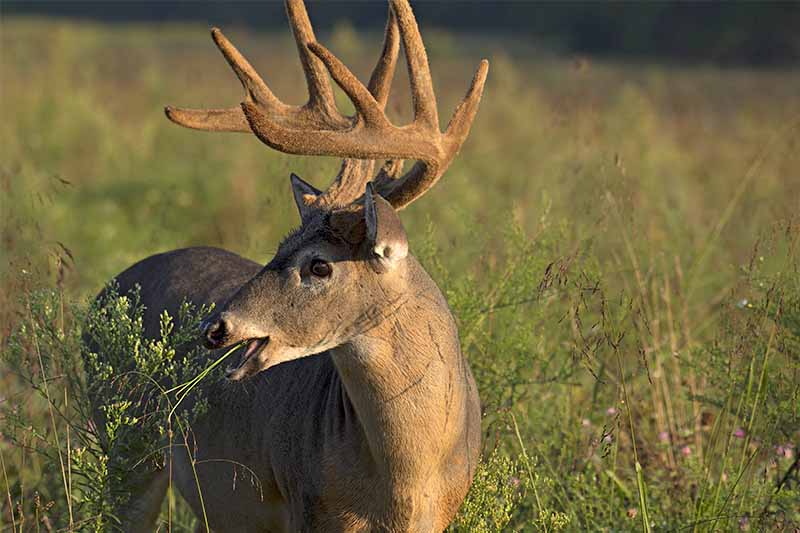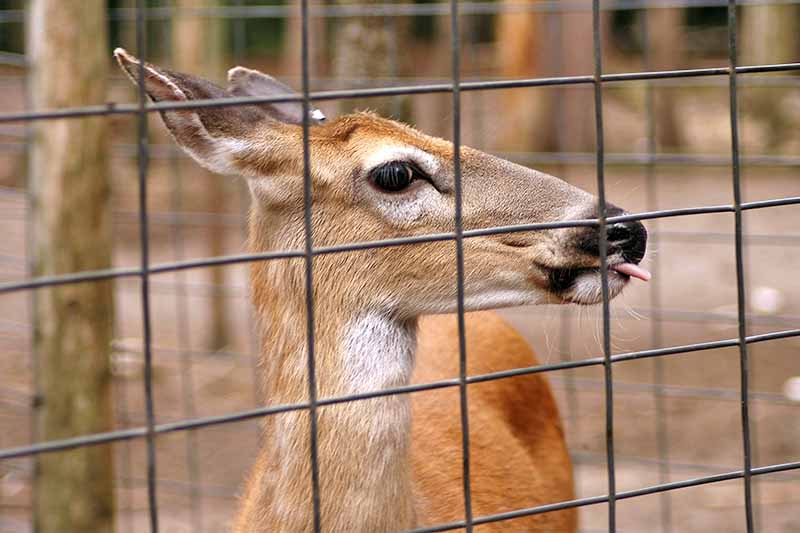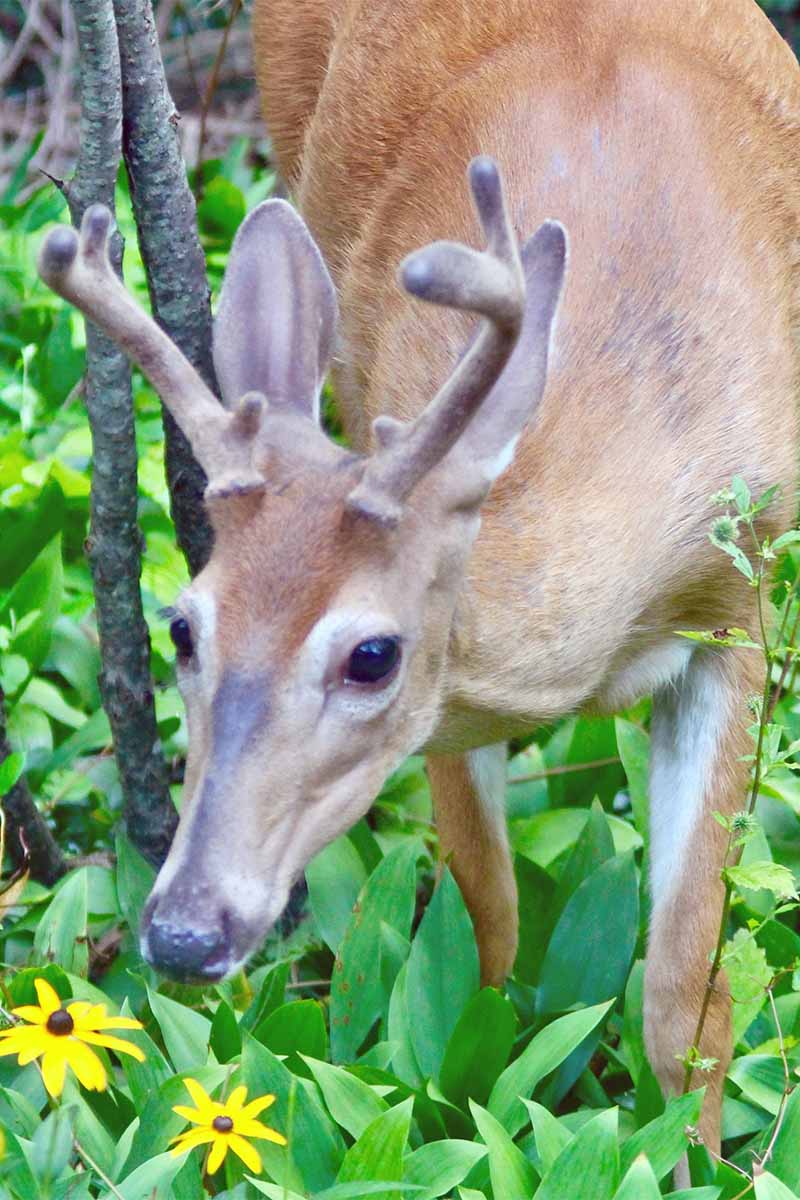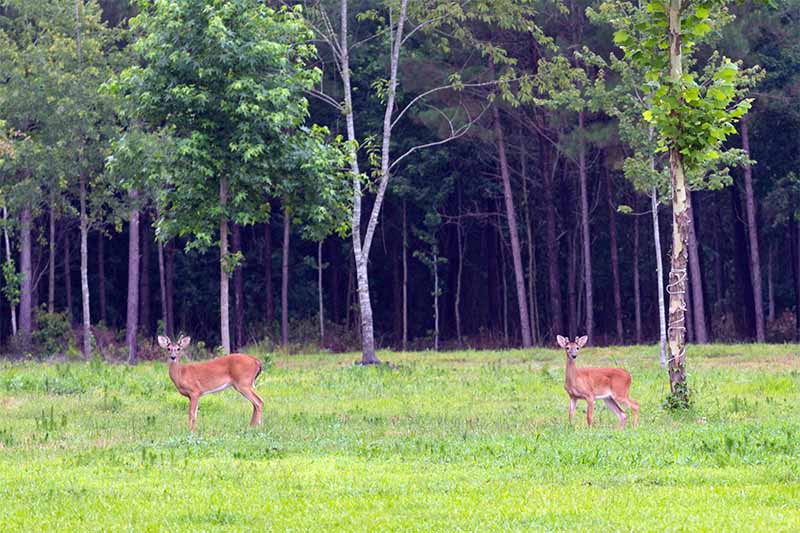On the one hand, I understand the indiscriminate hunger of deer and the damage they can do to a landscape, or your carefully tended garden. In a single night, they can ravage months of work in the vegetable beds. Other times, they can do so much cosmetic damage to a landscape that repairing it is a costly and frustrating experience, if repair is even possible. But, on the other hand, I really like deer. We link to vendors to help you find relevant products. If you buy from one of our links, we may earn a commission. These are stunning creatures. Stunning creatures, that is, with an insatiable appetite and utter disdain for boundaries. I’m admittedly soft-hearted when it comes to almost any animal, bird, or bug. I shake my head and say, “Those dang deer… But I guess they’re hungry, I can’t blame ‘em,” every time I spot damage.
Call me an enabler, but I don’t really mind deer doing their thing. Of course, not everybody feels that way. For most folks, deer are an intolerable nuisance and the bane of a gardener’s existence. I understand this, and have worked for enough clients who disdain deer and want them banned from their properties to know how to achieve this end.
Going forward, let’s remember a key facet of gardening that applies doubly to deer duty: An ounce of prevention is worth a pound of cure. Here’s what’s to come in this article: Keep reading to find out how you can deter this particular variety of local wildlife from your yard and garden, or at least minimize their damage.
Keep Them Away
Before we jump into our list of plants that these animals tend to pass over, let’s look at how to keep them out of our gardens and properties in the first place.
Somethin’ Smells Funky
Deer have a strong sense of smell, so a common suggestion for preventing their appearance is to spread stinky stuff around your property, or near the plants you are trying to keep these ungulates away from.
Stay Out of My Yard!
More permanent, structural solutions are also available. And in this case, the most expensive solution is also the most effective. Liquid Fence HG-70123 Repellent Concentrate In my experience, the ones that don’t smell as bad to us are typically the most effective. They are usually sourced from natural rosemary and garlic extracts instead of rancid eggs, so they’re more pleasant to apply, too. Ortho Deer B Gon Repellent Granules Unfortunately, our hungry frenemies tend to grow accustomed to regular scents, and as time goes by, an often-applied deterrent becomes tolerable to their noses. The solution isn’t to apply more of the same, but to rotate products and keep the local critters on their toes – err, hooves. I’ve had excellent luck with products like Scram, rotated with a liquid repellant such as Deer Out. This can be followed with application of a stronger formula like Professional Deer Scram. Afterwards, start the application cycle over again.
Spray the Pests Away
My favorite solution for keeping ungulates and other wild pests away is tied to a fancy piece of motion-sensing technology. A motion-activated sprinkler is probably the most effective control method I’ve ever used. I employ these in the gardens of many of my clients, and find the results to be utterly satisfying. All it requires is a sturdy, leak-proof hose bib and a great motion-activated sprinkler attachment. Abco Tech Activated Motion Sensor Animal Repellent Water Sprinkler Installation is simple: And you’re done! The only drawbacks to this solution are that you need to have enough hose length to meet the needs of your property, and you need to keep the hose bib turned on. That’s why durable, high-quality bibs and hoses need to be used to eliminate water waste. In my experience, there’s no better deterrant than these sprinkler heads. At their best when protecting your vegetable garden, they can also be effective when employed as spritzing sentries at any openings in your fence line. Here it is: Simply wall off your property by installing a deer fence. This method is a relatively arduous undertaking, but the results are proven and effective. The only hangup is that now you’ve got a large fence around your property. For some folks, that’s just fine. But for others, the aesthetic drawbacks of this netting are a deal-breaker when weighed against the potential benefits. This project can easily become a very expensive endeavor, but nothing else is as effective. For detailed instructions to set up your own, see our DIY tutorial.
Remove Their Preferred Menu Items
Another method for preventing deer from using your yard as anything more than a highway to more desirable locations is to avoid planting what they want to eat.
Our feature on deer-proof trees is a good place to start, but a variety of perennials and other plantings are excellent choices as well.
Trustworthy Perennials, Annuals, and Bulbs
It’s worth repeating that nothing is truly deer proof, but rather, most plants are merely resistant. The following is a handy list of a variety of herbaceous plants that are resistant to our four-legged ungulate friends. Follow the links for handy guides that will teach you how to grow them in your garden space.
Allium Astilbe Balloon Flower Begonia Black-Eyed Susan (mature growth only – young growth is nibble-able) Coreopsis Daffodil Dahlia Iris Lily of the Valley Marigold Petunia
Deerly Departed
The deer aren’t going anywhere, that’s for sure. The more cities and suburbs grow, the fewer natural resources are available for them to eat. This makes our gardens and yards a convenient source for an all-you-can-eat buffet.
I think it’s a fair trade, but for those who really don’t want deer messing up their yards or contributing to the spread of Lyme disease, some well-utilized deterrents are an easy solution. For a more permanent solution, planting resistant trees or installing appropriate fencing is an even better way of minimizing the damage they like to do to our handiwork. If you’ve got trouble with other critters like rabbits in your yard, check out our how-tos on keeping them away. Or if large mammals are giving you grief, some of these topics may be of help:
DIY Guide: How to Install a Deer Fence to Keep Wildlife Out of the Garden Dear Deer, Leave My Trees Alone How to Keep Moose Out of Your Garden and Orchard
And if you have a comment, question, or suggestion, we’re always happy to receive them in the comments section below. Thanks for reading! Photo by Matt Suwak © Ask the Experts, LLC. ALL RIGHTS RESERVED. See our TOS for more details. Product photos via Liquid Fence, Ortho, Enviro Pro, Deer Out, Epic, and Abco Tech. Uncredited photos: Shutterstock. Originally published by Mike Quinn on September 7th, 2014. Last updated July 19th, 2018.
